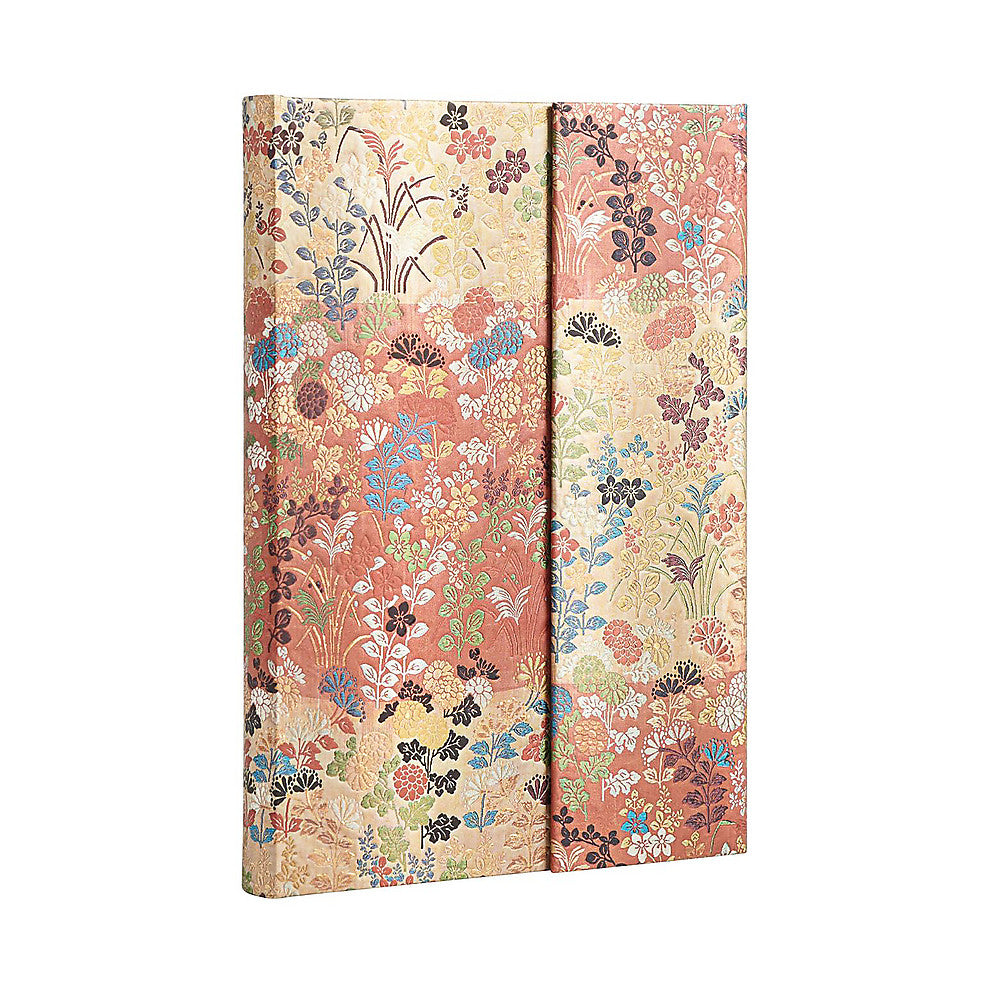Description
Introducing the Kara-ori (Japanese Kimono) Midi Unlined Journal, a unique blend of elegance and functionality. Inspired by the rich heritage of Japanese textiles, this unlined journal is designed for artists, writers, and dreamers alike. Each journal showcases an exquisite design reminiscent of the Edo period (1615-1868), featuring silk dyed with beni, the beautiful pigment derived from safflower petals, accented with luxurious gold lacquer. The Karaori pattern, traditionally found in women's kimonos for Noh theatre, captures the essence of femininity through its intricate embroidery and artistic representation of flowering grasses. This journal not only provides ample writing space but also serves as a collectible piece, perfect for those who appreciate Japanese art and culture. Whether you’re documenting your thoughts, sketching your latest inspiration, or creating your own story, the Kara-ori Journal is the ideal companion. Celebrate Japanese craftsmanship while enjoying the tactile experience of high-quality paper and an alluring cover design that sparks creativity. Experience the allure of a traditional unlined journal that transforms your moments into timeless memories. Perfect as a gift for lovers of art, culture, and history, the Kara-ori Midi Unlined Journal stands out for its unique artistry and practicality. Order yours today and immerse yourself in a piece of Japan’s storied past!

